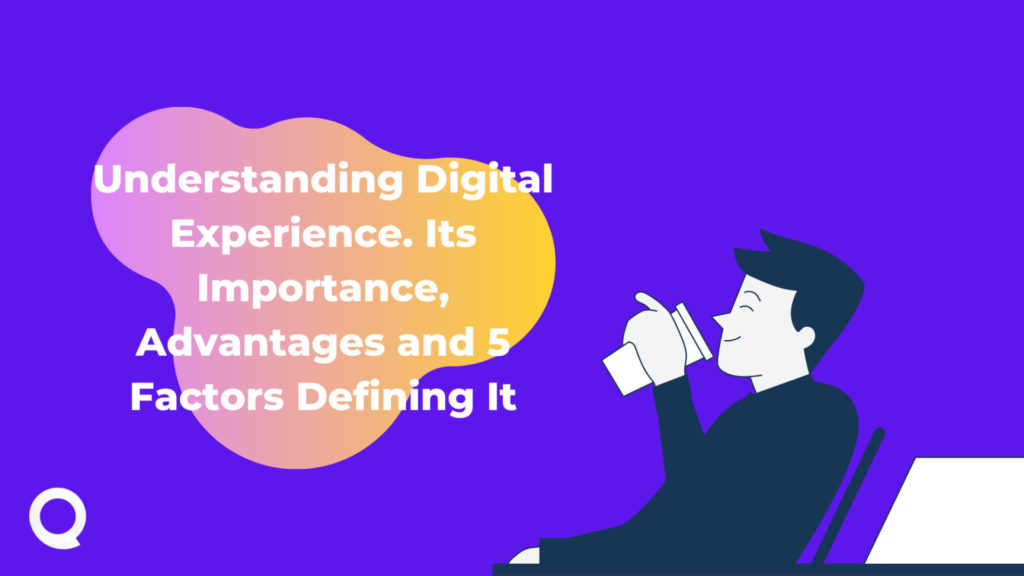Every day-to-day business relies on assistance with its digital transformation efforts. There are always the same difficulties and misconceptions about how to handle this new topic and how to truly transform the business for the better, regardless of the size of the organization.
It’s exciting and interesting to discuss AI, Blockchain, IoT, and other issues, but genuine digital transformation only occurs when a firm transforms its business model, services, products, and, most importantly, its workers and corporate culture. All of this is driven and enabled by technology, but TECHNOLOGY IS NOT A SOLUTION.
Every company must discover solutions for its consumers and adapt to new possibilities; nevertheless, it is their duty to identify the correct answer and utilize technology as a tool to activate those solutions. As a result, the labour and effect required is still 95 percent of the time on the internal change process and just 5 percent on technology adoption.
People are concerned about digital transformation

The human being, as in any commercial subject, is at the core of the process. When we look at a firm, we can divide it into four categories: people, processes, information technology, and strategy. Humans play the roles of users, leaders, creators, and shapers in each of these four pillars.
So, when we discuss Digital Transformation, we must first consider how these influencers, or individuals in the process, must adapt to the new world of technology and exponential change. Several studies show how few digital transformation efforts are effective in businesses. Most schemes fail 80-85% of digital transformation efforts, and we frequently hear that the failure is caused by a lack of culture and poor people management.
Only 11% of 1,140 business executives surveyed by McKinsey believe their current business models will be economically viable through 2023, which explains why 64% of those executives feel their organisations must establish new digital enterprises.
Technology or people? First and foremost, who?

In the market, companies might approach digital transformation in one of two ways. They are referred to as the “Technology First” and “People First” approaches, respectively.
The most popular model for how organisations perceive their digital transformation is Technology First. They come across software or technology, are intrigued by its features, and attempt to apply it in their business. This initial technology method has a straightforward difficulty.
People search for features rather than solutions in this top-down approach. This is the wrong approach, especially in employee engagement, because you are not co-creating a solution that helps your client solve an issue and your employees solve a problem.
People first come from the opposing viewpoint. It is all about getting people to think about potential solutions and allowing them to rethink procedures, structure, and so on. The most essential aspects are worker education and the ability to communicate what they think and feel. It is a cultural strategy in which we try to modify culture in order to adapt to new technologies and push software to the sidelines.
Also Read: Understanding Digital Experience. Its Importance, Advantages and 5 Factors Defining It
Illusions regarding digital transformation
As digital innovation progresses, businesses must consider how to effectively increase technology to provide the proper value to customers. According to a recent survey conducted by Deloitte, digital technologies may enhance financial performance, customer happiness, and product quality.
However, many traders regard the change as an involving process and want to keep it online. Operators must consider how to combine current systems into a digital environment that provides excellent customer service.
In the past, this might have been a time-consuming procedure; however, low-code software has solved this issue. With that in mind, where should the change process begin?
Above everything, a business approach
Due to unwillingness to change, big operators may see digital transformation as complex. Deloitte previously reported that while virtually all companies have become more digitally transformational, just 30% have improved the underwriting process. Why? They are watching the transition from a technical standpoint.
When carriers use a business-like approach, they may develop solutions that match with aims and fulfil evolving consumer demands, and technology serves as a kind of support. A first business strategy is to return to the company’s roots rather than the back-end of the previous system.
Platforms with a Unique Design
Operators may create solutions with more speed, simplicity, and agility using a cloud-native solution. Innovations may now be completed in weeks or months rather than years. Quickboarding employs cutting-edge technology and allows for infinite flexibility.
As the sector evolves, operators will be able to swap systems, allowing real digital transformation. If operators do not take the appropriate steps, they risk spending more time and money updating outdated systems as technology advances. Operators may make digital transformation more attainable by prioritizing business objectives.
A Culture of Change

You approach your own culture using the People First method. Many corporate cultures are based on centuries-old practices and rules, yet they do not assist a company in overcoming its origins. So, when it comes to cultural transformation, you must also break away from the old and establish a new environment in which individuals may escape their daily grind.
This is a shift in your organization’s whole system. Going from “Running a Firm” to “Leading a Business to the Future” is challenging, but this is where the work of digital transformation takes place and where you spend 95 percent of your time to improve your business.
Rethink your organization’s digital transition

There are several factors for digital change. It might be the introduction of new technology, the recognition of consumer demand, or the regular execution of that technology. Design Thinking and Brainstorming approaches are utilized to feed this process and harness the potential of your organization’s employees.
The first aspect of people is particularly effective when not only talking to management, but when everyone in your business is involved, when you integrate your customers and customer feedback, and when you speak before creating a solution before limiting yourself to the search for software and technical solutions.
Try to think outside the known and “outside the box” about what the best potential outcome for a customer may be. When you’ve identified a solution that provides ADDED VALUE to the client, it’s time to consider “Digital” in terms of Digital Transformation.
The term “digital” in digital transformation

As previously stated, the digital component is frequently a minor component of a company’s total digital transformation process. It has two purposes: first, it serves as a catalyst for new ideas, and second, it serves as a catalyst for your answers.
So, while considering your digital transformation journey, you must first understand what is going on around you, and then consider what can be done to add value to your customers, and last; you must be prepared with a list of requirements to study the proper technology to activate your solution.
Changing the company’s structure
So far, it appears to be pretty simple from the outside. You have a trigger, a process to discover the correct solution, and finally, the right technology to activate the solution. However, as previously said, you will require more of this procedure in order for your change to be effective. Changing your culture, and connecting your strategy and organizational structure are all important.
When you have discovered your answer and wish to implement it, you must destroy the existing structures. However, there is a significant requirement to restructure your company. You must consider both the customer experience and the customer journey and match those processes with your company. An excellent example would be a modification that many manufacturing businesses must undertake.
They follow a very organized procedure and have an optimization mentality. When you enter the software and services sector, as many manufacturing businesses do, you must take a new strategy. The customer journey is different, sales and service are moving at a quicker speed, and technology is evolving faster than it normally does in manufacturing.
Conclusion
True digital transformation may be realized by adopting a new viewpoint on conventional procedures. Because of the new technology that has changed the industry, the notion of digital transformation as an intimidating procedure is no longer accurate.
In short, find new opportunities by integrating your workers and customers in the process, utilize technology as an enabler and a trigger, and modify your culture to adapt to a new business reality with changing consumer requirements. With new technology possibilities, modify your processes and structure to fit your future demands, rather than simply maintaining power.


